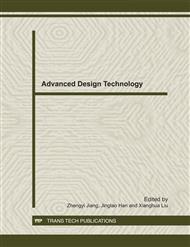p.666
p.670
p.674
p.679
p.683
p.687
p.693
p.699
p.705
An Intake Three-Pipeline Model Using Experimental Optimization for a Small Engine
Abstract:
The ideal performance of a small engine requires changeable intake pipeline volume while engine speed varies, as been recognized in former study. However, an intake pipeline with changeable volume is tremendously difficult to achieve. This paper presents an innovative three-pipeline model by experimental design optimization to simulate a simple changeable volume pipeline. The primary goals contain the promotion of lower-speed torque, the fuel consumption; emissions of CO and HC are expected to reduce simultaneously. The optimum diameters, lengths of three pipelines, and the proper timing of switching three valves among lower speed pipe and higher speed pipe can be obtained by proposed integration method
Info:
Periodical:
Pages:
683-686
Citation:
Online since:
December 2011
Authors:
Price:
Сopyright:
© 2012 Trans Tech Publications Ltd. All Rights Reserved
Share:
Citation:


